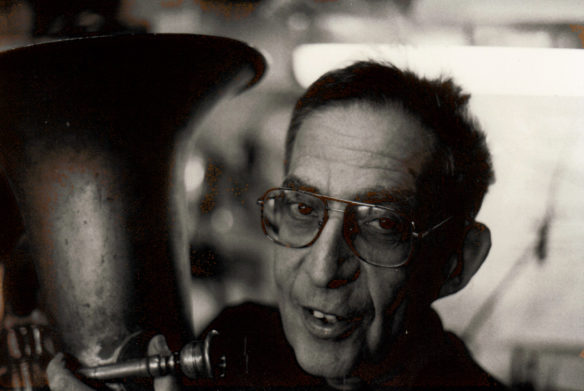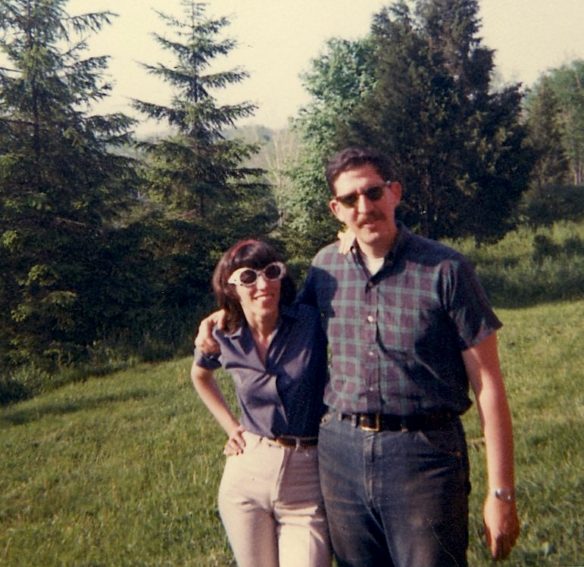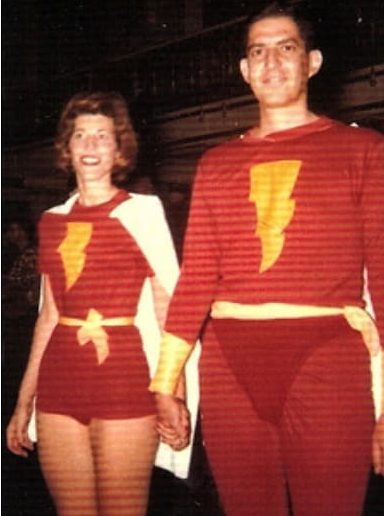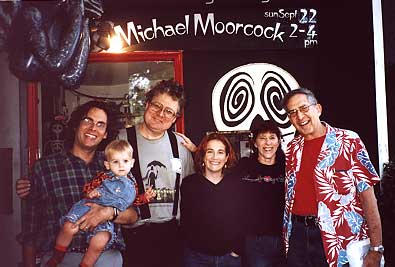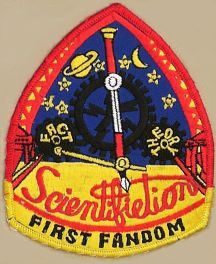
First Fandom members have until May 15 to vote on the candidates for the organization’s annual awards.
The names of the winners will be announced at DisCon III, this year’s Worldcon, in Washington, D.C.
Here are the fans up for the three awards along with brief excerpts from their candidate bios.
FIRST FANDOM HALL OF FAME
The First Fandom Hall of Fame, created in 1963, is a prestigious achievement award given to a living recipient who has made significant contributions to Science Fiction throughout their lifetime.
Candidate: William F. Nolan
…Among his many accolades, Nolan has twice won the Edgar Allan Poe Award from the Mystery Writers of America. He was voted a Living Legend in Dark Fantasy by the International Horror Guild in 2002, and in 2006 was bestowed the honorary title of Author Emeritus by the SFWA. In 2010, he received the Lifetime Achievement Bram Stoker Award from the HWA. In 2013 he was a recipient, along with Brian W. Aldiss, of the World Fantasy Convention Award. In 2014, Nolan was presented with another ram Stoker Award, for Superior Achieve[1]ment in Nonfiction. In 2015, he was named a World Horror Society Grand Master.
POSTHUMOUS HALL OF FAME AWARD
The Posthumous Hall of Fame was created in 1994 to acknowledge people in Science Fiction who should have, but did not, receive that type of recognition during their lifetimes.
Candidates:
Richard & Pat Lupoff
…With Pat, he edited the SF fanzine Xero which they unveiled at the 1960 Worldcon in Pittsburgh. A regular feature of Xero was a nostalgic look at Golden Age comic books called “All in Color for a Dime” that later resulted in two books of essays: All in Color for a Dime (1970) and The Comic Book Book (1973), both of which Lupoff co-edited with fellow fan Don Thompson. Dick and Pat appeared at Pittcon, the 1960 Worldcon, dressed as the popular comic book characters Captain Marvel and Mary Marvel for the con’s masquerade event. Their picture as the two superheroes has been widely circulated in SF and comic book fandoms. Xero won the 1963 Best Fanzine Hugo Award. A collection, The Best of Xero, published in 2004, edited by the Lupoffs — and with an introduction by film critic Roger Ebert – was nominated for the 2005 Best Related Book Hugo. In addition, Dick edited other popular genre anthologies, including the What If? SF series (1980 – 1984)….
Mike Resnick
,,,Resnick won five Hugo Awards (nominated for 30+), a Nebula Award (nominated for 10+), and was GoH at Chicon 7 in 2012. He was one of the founders of ISFiC, the organization that runs Windycons. He was also a long-time member of the Cincinnati Fantasy Group (CFG)…
Walter Tevis
…Among his works were several SF books, including The Man Who Fell to Earth (1963), Mockingbird (1980), Far from Home (1981), and The Steps of the Sun (1983). Far from Home was a collection of his short SF, most of which had originally been published in popular genre magazines of the time such as Galaxy, The Magazine of Fantasy & Science Fiction, If, and Omni.
…Hugo Award for Best Dramatic Presentation (1977) for The Man Who Fell to Earth; Nebula Award Nomination (1981) for Mockingbird; Locus Award Nomination for Best Short Story (1980) for “Rent Control” (originally published in the October, 1979, issue of Omni Magazine)…
SAM MOSKOWITZ ARCHIVE AWARD
Sam Moskowitz Archive Award was created in 1998 to recognize not only someone who has assembled a world-class collection but also what has actually been done with it.
Candidate: Kevin L. Cook
…As a teenager in the 1970’s Kevin kept reading in many places that no one knew more about SF than Sam Moskowitz. He had some questions. Why ask a lesser authority? Therefore, Kevin wrote to Mr. Moskowitz with his questions. Sam answered of course. That act impressed Kevin. If Sam Moskowitz was willing to share a bit of his vast knowledge with someone, should he not pass along the torch if he ever obtained knowledge of his own? With that thought in mind Kevin has provided many publishers in the field with photocopies, scans and even the actual loan of books and magazines…
For more than 25 years has continued to dispense information through his quarterly apazine for The Pulp Era Amateur Press Society (PEAPS). When he obtains a letter from a famous author such as A. Merritt or an interesting inscription in a book, he provides photocopies for the PEAPS members, which also includes people beyond since a copy of all PEAPS mailings are housed in the Popular Culture Library of Bowling Green University. That effort of sharing his knowledge through the collection he has gathered is why Kevin L. Cook is a candidate for the Sam Moskowitz Archive Award for 2021.

